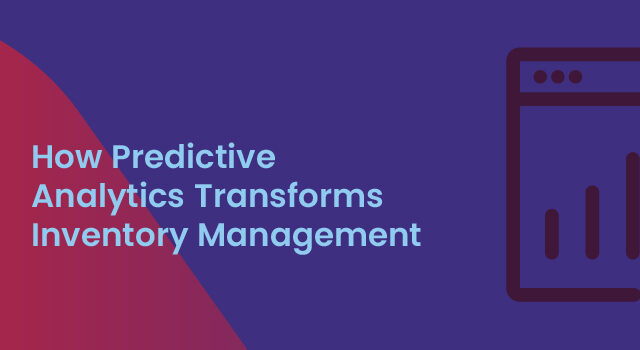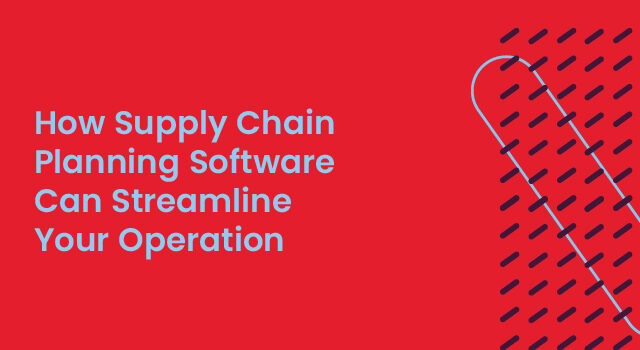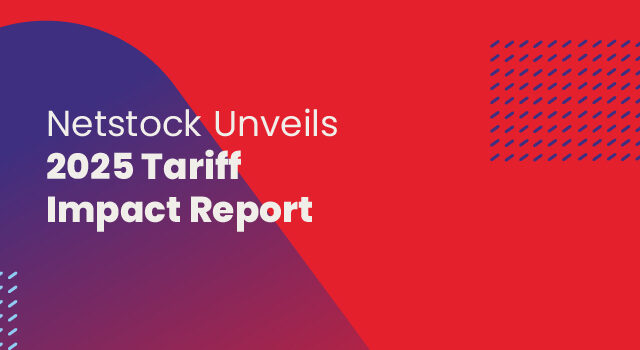Choosing the right supply and demand planning software for your business can be daunting. With so many options available, each claiming to be the perfect solution, it’s easy to feel overwhelmed.
With the right software for your supply chain, you’re always prepared! You’ll have the visibility and flexibility to streamline supply chain operations, make better planning decisions, optimize existing inventory, and ensure ongoing profits.
In this blog post, we’ll break down the essential steps for selecting the best supply and demand planning software. We’ll cover topics from understanding your business to assessing software integration, researching your options, and aligning onboarding with team capabilities. Armed with this information, you’ll feel confident and empowered to make the right choice for your business.
Table of Contents
1 Understand your business needs
You must understand your business needs before selecting the right supply chain planning software. Start by defining the purpose of the software: How will it help you achieve your business goals and streamline processes? Analyze your current workflows, identify any challenges, and engage with key stakeholders from various departments, such as sales, marketing, and finance, to comprehensively understand your business requirements. Gathering diverse input ensures your chosen software addresses all critical areas and delivers the intended results.
Ask specific questions about your supply and demand:
- Are you frequently experiencing stock-outs or holding excess stock?
- Are you facing issues with suppliers not meeting their commitments?
- Are you battling with inaccurate forecasts?
- What exact problems does the software need to solve?
- What features are necessary to meet these requirements?
- How does the industry you’re in influence your software requirements?
Without a clear understanding of these factors, you risk implementing a solution that doesn’t fully align with your goals, which can cost your business money, waste work hours, and leave your team frustrated. By thoroughly assessing your business situation, you lay a solid foundation for choosing demand and supply software that enhances your operations and drives success.
2 Define software expectations
The next step is to define what you expect from the software. The better you understand your software needs, the better prepared you’ll be for your supply and demand planning. With ongoing market volatility and supply chain disruptions, the software you select needs the right features to ensure your business has the visibility and ability to rapidly adapt to change.
To understand what key capabilities and features you need, consider the specific functionalities that will address your pain points and support your business goals. Factor in the return on investment (ROI) the software can provide and consider the key capabilities and features you need.
Here are four scenarios to consider:
Scenario one: I need better inventory visibility
To increase inventory visibility, the software must provide a comprehensive single-view dashboard that allows you to view key inventory indicators. The functionality should offer real-time data, customizable views, and alerts to inform you about inventory levels.
Scenario two: I need accurate forecasts to scale operations
Your business may want to scale its operations and is under pressure from the finance department to create automated, accurate sales forecasts. The software must offer an intelligent forecasting feature leveraging historical data and predictive analytics to improve accuracy and efficiency.
Scenario three: I have too much excess inventory
Your business may have multiple warehouses, and you may experience stock-outs at one location and excess stock at another. Having functionality at your fingertips to quickly redistribute the excess stock to combat a potential stock-out situation is working fast and smart. By optimizing your existing inventory, you’re saving time and resources and not losing any sales.
Scenario four: I need to improve customer service levels
If you aim to improve customer service levels, you need functionality enabling you to place optimal inventory orders to reduce the likelihood of experiencing stock-outs. Reliable order management and supplier performance functionality can ensure timely deliveries and maintain customer satisfaction and loyalty.
Additional functionality to consider:
Given that demand and supply planning never take place in isolation, you may need functionality allowing your executive team to have a single view of all inventory and sales performance. Depending on your business reporting requirements, you may also need functionality to create customized reports.
What about AI functionality when selecting software?
There’s a lot of excitement around artificial intelligence (AI)—and we get it! The opportunities for software infused with AI functionality are endless. However, you should carefully evaluate whether AI functionality aligns with your business needs and objectives. Consider how AI functionality can enhance supply chain planning by improving forecasting accuracy, automating routine tasks, and providing deeper insights into data trends. Ensure any AI capabilities the software vendor offers are practical and add real value to your supply chain operations.
By clearly outlining the capabilities you’re looking for and considering specific scenarios reflecting your business needs, you can narrow down your options and focus on software solutions that align with your requirements.
3 Assess software integration
When selecting demand and supply planning software, it’s essential to consider how it integrates with your existing systems, processes, and team.
Technology: Start by assessing the technical requirements of the software. Ensure it seamlessly integrates with your current systems, such as ERP, CRM, and other essential business applications. Compatibility is critical to avoiding data silos and ensuring smooth data flow across your business. Check if the software supports APIs or other integration tools facilitating connectivity with your existing technology stack.
Deployment of the software: Decide whether an on-premises or cloud-based solution is best for your business.
- On-premises: This option offers more control over your data and systems, which can be critical for businesses with strict compliance requirements. However, it also requires significant upfront investment in hardware and infrastructure, and ongoing maintenance and IT support.
- Cloud-based: Cloud-based solutions are typically more flexible and scalable, with lower initial costs and reduced burden on your internal IT team. They offer the advantage of remote access, automatic updates, and robust disaster recovery options. However, factors such as data security, compliance with industry standards, and potential downtime should be considered.
Cost implications: Consider the total cost of ownership (TCO), including implementation, licensing, training, and maintenance. An on-premises solution might have higher initial costs but lower ongoing expenses, whereas a cloud-based solution might have a more manageable monthly or annual subscription fee. Ensure the solution fits within your budget while delivering the needed functionality and benefits.
Support and SLAs: Good vendors provide comprehensive implementation assistance, including setup, configuration, and data migration. They should also offer ongoing support and training to help your team maximize the software’s potential. Understanding the vendor’s service level agreements (SLAs) and response times is critical to ensuring you have the necessary support when issues arise.
People: Consider your team’s skills and expertise. Will your current team be able to manage and operate the new software, or will you need additional training or new hires? It’s important to involve your IT department early in decision-making to understand the resources required for implementation, ongoing maintenance, and support. Additionally, consider the impact on the end-users. The software must be user-friendly to promote adoption and minimize resistance.
4 Research your options
Thorough research helps businesses choose a software solution that addresses current requirements and scales and adapts to future growth.
Learn about the software vendor: Selecting software from a reputable and experienced vendor can significantly impact the implementation process and onboarding – all ensuring the success of your business operations. Here’s what to consider:
- Industry expertise: Look for software providers with a proven track record of longevity. A business that’s been around for a substantial period indicates stability and reliability. Its longevity also suggests that it’s weathered market changes and likely evolved its product offerings over time.
- Product innovation: It’s essential to assess how innovative the software vendor is. Are they continually updating and enhancing their products to meet evolving market needs? Software innovation can translate to improved efficiency, better user experience, and staying ahead of competitors.
- Ensure data security measures are in place: Data security is paramount, especially when data breaches have severe consequences. Ensure the software employs robust encryption methods to protect your data. Additionally, check if the software complies with relevant data protection regulations depending on your industry. Look for features that allow you to control access to sensitive data within the software, including user authentication mechanisms, role-based access controls, and audit trails to monitor user activity. Investigate whether the software undergoes regular security audits by third-party firms and holds certifications such as ISO 27001, which attest to their commitment to security best practices. It’s critical that the software keeps your data protected, as data breaches will damage your reputation and result in lost business.
- Review online independent review sites: A customer’s word will always carry more weight. Leveraging customer reviews on independent software review sites and third-party reports will help you make a well-informed decision when selecting the best software for your business.
Let’s explore independent review sites:
Online software review sites: these independent sites offer user and expert reviews, feature comparisons, pricing information, screenshots and demo videos, user forums, industry-specific recommendations, and integration details. Here are a few software review platforms:
G2: “G2 has been a great place for me to both find and review software…it’s actually been fun to see my reviews go up, get marked helpful…” – Matthew Gardner, RouteThis
Capterra: “Capterra helped us get insights from other people in our industry to make a better, more informed decision”- JOSH D, Sales Engineer
TrustRadius: “Honest feedback platform! Not just “the good”. This provides proper insight for customers who are evaluating options or selection shortlists.” – Victor van der Vring, Quality Assurance Coordinator, TOPdesk
5 Align onboarding with team capabilities
Know the vendor Implementation timeframes: Consider the software’s implementation timelines that match your team’s requirements. Some vendors provide fast deployment for urgent projects, requiring a dedicated team and clear scope. Others offer a medium-term approach, allowing for detailed planning, gradual integration, and enhancements over weeks to months.
Onboarding: Responsive and knowledgeable support teams can make all the difference in overcoming challenges and maximizing software adoption and efficiency. These experts bring valuable industry-specific insights that can help tailor the software to your unique business needs, ensuring a smoother and more effective onboarding process.
Continuous learning: Many vendors offer comprehensive online resources and self-paced learning to cater to the team’s flexibility. This might be suitable if your team is comfortable with independent learning and can manage their time effectively. The vendor should also provide comprehensive guides, tutorials, and knowledge bases.
Align with your current team setup:
- Assess your team’s size and workload to see if you need a vendor with flexible onboarding options, especially for smaller or busier teams.
- Evaluate your team’s technical skills; vendors with comprehensive support may be essential for less experienced teams.
- Consider organizational readiness for change and choose vendors offering change management support.
- Determine the level of post-implementation support needed; vendors with robust customer support ensure long-term software adoption.
Empower your business with smart software selection
By following the outlined steps, you can make a confident and informed decision. Remember that you’re laying the groundwork for future success with careful research, consideration, and planning. Stay focused, trust the process, and know you’re taking proactive steps towards a more efficient and resilient supply chain.




